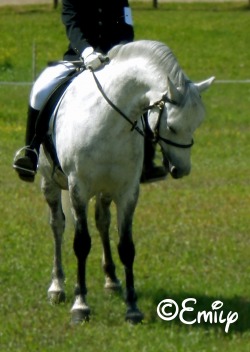The Welsh Pony - A riding pony with quality

The general description of the Welsh Mountain Pony can be applied to the Welsh Pony, with greater emphasis being placed on riding pony qualities whilst retaining the true Welsh quality with substance.
For generations these ponies were the hill farmers' main means of transport, herding sheep and wild ponies over rough and mountainous country. They had to be hardy, balanced and fast to survive, which ensured that only the best were bred from. These qualities, combined with a natural jumping ability, and the temperament of their Welsh Mountain Pony forebears make the Welsh Pony second to none in whatever field his young rider may choose. Today they hold their own among our top class riding ponies both in performance competitions and in the show ring.
The height should not exceed 13.2 h.h. (137.2 cms).
Source: WPCS - Welsh Pony and Cob Society - www.wpcs.uk.com
General Character
The general description of ponies in Section A of the Stud Book is applicable to those in Section B, but more particularly the Section B pony shall be described as a riding pony, with quality, riding action, adequate bone and substance, hardiness and constitution and with pony character.
Head
Small, clean-cut, well set on and tapering to the muzzle
Ears
Well-placed, small and pointed, well up on the head, proportionately close
Jaws and Throat
Clean and finely-cut, with ample room at the angle of the jaw
Shoulders
Long and sloping well back. Withers moderately fine, but not "knifey". The humerus upright so that the foreleg is not set in under the body
Back and Loins
Muscular, strong and well coupled
Ribs
Well sprung
Action
Action must be quick, free and straight from the shoulder, knees and hocks well flexed with straight and powerful leverage well under the body
Colour
Any colour, except piebald and skewbald
Eyes
Bold
Nostrils
Prominent and open
Jaws and Throat
Clean and finely-cut, with ample room at the angle of the jaw
Forelegs
Set square and true, and not tied in at the elbows. Long, strong forearm, well developed knee, short flat bone below knee, pasterns of proportionate slope and length, feet well-shaped and round, hoofs dense.
Girth
Deep
Hind Quarters
Hocks to be large, flat and clean with points prominent, to turn neither inwards nor outwards. The hind legs not to be too bent. The hock not to be set behind a line from the point of the quarter to the fetlock joint. Pasterns of proportionate slope and length. Feet well-shaped, hoofs dense.
